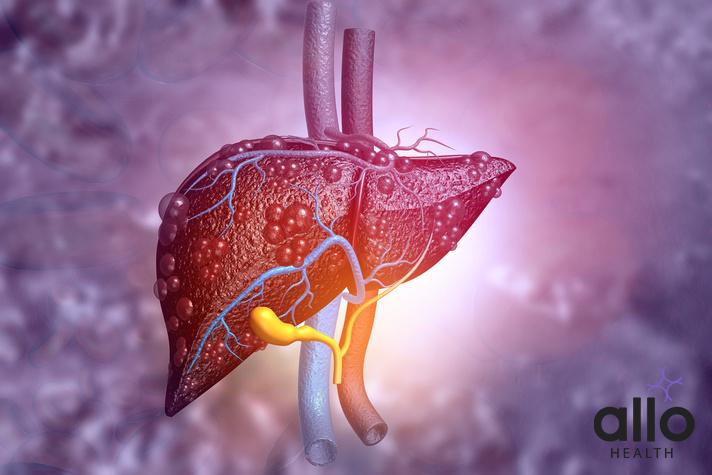How Is Hepatitis B Diagnosed?

Allo Health is dedicated to personalized well-being, offering support and trusted information tailored to individual health goals. The platform emphasizes human-generated content, led by a distinguished medical team of experts, including physicians and sexual health specialists. Their commitment to credibility involves rigorous fact-checking, authoritative research, and continuous updates to ensure accurate, up-to-date information. Allo Health's unique approach goes beyond conventional platforms, providing expert-led insights and a continuous commitment to excellence, with user feedback playing a crucial role in shaping the platform's authoritative voice.

Dr Thanushree, has her MBBS from Kanachur Institute of Medical Sciences, Mangalore
Why This Was Upated?
Our experts continually monitor the health and wellness space, and we update our articles when new information became available.
Updated on 26 February, 2025
- Article was updated as part of our commitment to diversity, equity, and inclusion.
The following blog article provides general information and insights on various topics. However, it is important to note that the information presented is not intended as professional advice in any specific field or area. The content of this blog is for general educational and informational purposes only.
Book consultation
The content should not be interpreted as endorsement, recommendation, or guarantee of any product, service, or information mentioned. Readers are solely responsible for the decisions and actions they take based on the information provided in this blog. It is essential to exercise individual judgment, critical thinking, and personal responsibility when applying or implementing any information or suggestions discussed in the blog.
Hepatitis B is a viral infection that affects the liver, causing inflammation and potentially leading to severe complications such as liver cirrhosis and liver cancer if left untreated. Timely diagnosis of hepatitis B is crucial for effective management and prevention of transmission. This article delves into the intricate process of diagnosing hepatitis B, encompassing various tests, clinical assessments, and considerations for accurate identification.
Clinical Evaluation
Diagnosing hepatitis B typically begins with a comprehensive clinical evaluation by a healthcare provider. During this assessment, the healthcare professional collects detailed information about the patient’s medical history, including any prior exposure to hepatitis B, risk factors such as intravenous drug use or unprotected sexual activity, and symptoms suggestive of liver disease such as jaundice, abdominal pain, fatigue, and nausea.
Physical Examination
A thorough physical examination is essential in diagnosing hepatitis B. The healthcare provider may examine the patient for signs of liver inflammation, such as abdominal tenderness, hepatomegaly (enlarged liver), and jaundice (yellowing of the skin and eyes). However, it’s important to note that many individuals with chronic hepatitis B may not exhibit any physical symptoms, emphasizing the need for laboratory testing for accurate diagnosis.
Laboratory Testing
Laboratory testing plays a pivotal role in diagnosing hepatitis B, enabling healthcare providers to detect the presence of the hepatitis B virus (HBV) in the patient’s blood and assess liver function. The following are key laboratory tests used in the diagnosis of hepatitis B:
- Hepatitis B Surface Antigen (HBsAg) Test: The HBsAg test detects the presence of the hepatitis B surface antigen, a protein present on the surface of the hepatitis B virus. A positive HBsAg test result indicates current infection with hepatitis B, either acute or chronic. It is the primary screening test for hepatitis B.
- Hepatitis B Core Antibody (anti-HBc) Test: The anti-HBc test detects antibodies produced by the immune system in response to the hepatitis B core antigen. The presence of anti-HBc indicates past or ongoing infection with hepatitis B, regardless of whether the infection has been cleared or persists chronically.
- Hepatitis B Surface Antibody (anti-HBs) Test: The anti-HBs test detects antibodies produced by the immune system in response to the hepatitis B surface antigen. A positive anti-HBs test result indicates immunity to hepatitis B either through past infection and recovery or vaccination.
- Hepatitis B e Antigen (HBeAg) Test: The HBeAg test detects the presence of the hepatitis B e antigen, a marker of active viral replication. Its presence often indicates high levels of HBV replication and increased infectivity.
- Hepatitis B DNA (viral load) Test: The hepatitis B DNA test measures the amount of hepatitis B virus genetic material (HBV DNA) present in the blood. It provides valuable information about viral replication and helps monitor the effectiveness of antiviral therapy in patients with chronic hepatitis B.

Liver Function Tests
In addition to viral markers, liver function tests are essential for assessing the severity of liver damage caused by hepatitis B. These tests measure levels of various enzymes and proteins in the blood, including alanine aminotransferase (ALT), aspartate aminotransferase (AST), alkaline phosphatase (ALP), and bilirubin. Elevated levels of ALT and AST are indicative of liver inflammation, while elevated bilirubin levels may signify impaired liver function.
Imaging Studies
Imaging studies such as ultrasound, computed tomography (CT), and magnetic resonance imaging (MRI) may be employed to assess the extent of liver damage and detect complications associated with hepatitis B, such as liver cirrhosis and hepatocellular carcinoma (liver cancer). These imaging modalities can provide detailed images of the liver and help guide treatment decisions.
Liver Biopsy
In some cases, a liver biopsy may be recommended to obtain a tissue sample for histological examination. A liver biopsy involves inserting a thin needle into the liver to extract a small sample of tissue, which is then analyzed under a microscope. This procedure helps evaluate the degree of liver inflammation, fibrosis (scarring), and cirrhosis, providing valuable information for disease staging and treatment planning.
Special Considerations
Diagnosing hepatitis B in certain populations, such as pregnant women, infants born to HBV-infected mothers, and immunocompromised individuals, requires special considerations:
- Screening Pregnant Women: Pregnant women should be screened for hepatitis B early in pregnancy to identify those who are HBsAg-positive and at risk of transmitting the virus to their newborns during childbirth. Infants born to HBsAg-positive mothers should receive hepatitis B vaccination and hepatitis B immune globulin (HBIG) shortly after birth to prevent mother-to-child transmission.
- Testing Infants Born to HBV-Infected Mothers: Infants born to HBV-infected mothers should undergo HBsAg testing and hepatitis B vaccination at birth. Serologic testing for HBsAg and anti-HBs is recommended at 9-12 months of age to determine the infant’s immune status and the need for additional vaccination doses.
- Screening High-Risk Populations: High-risk populations, including individuals with a history of intravenous drug use, men who have sex with men (MSM), and individuals with multiple sexual partners, should undergo routine screening for hepatitis B to facilitate early diagnosis and linkage to care.

Diagnosing hepatitis B involves a multifaceted approach encompassing clinical evaluation, laboratory testing, imaging studies, and special considerations for high-risk populations. Early detection of hepatitis B is essential for initiating appropriate medical management, preventing disease progression, and reducing the risk of transmission to others. Healthcare providers play a critical role in promoting hepatitis B screening, vaccination, and comprehensive care to improve patient outcomes and public health.


